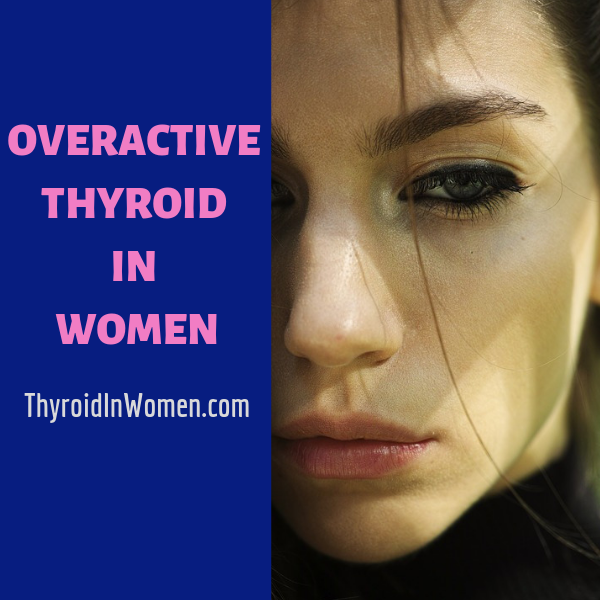
Hyperthyroidism is an over active thyroid gland that produces an excessive amount of thyroid hormones. With hyperthyroidism levels of thyroixine T4 or triiodothyronine T3 or both are high and thyroid stimulating hormone TSH is suppressed. In the subclinical hyperthyroidism T3 and T4 are normal but TSH is low.
Women have hyperthyroidism 20 times more frequently than men. The incidence of hyperthyroidism is higher in iodine deficient areas due to nodular goitre with autonomic nodules which produce thyroid hormones on their own and cause hyperthyroidism.
For example, Denmark is an area of moderate iodine insufficiency with high incidence of hyperthyroidism of 9.7% compared to Iceland where the population has high iodine intake and only 1% is affected by hyperthyroidism mainly due to Grave’s disease.
Causes of hyperthyroidism
The main causes of hyperthyroidism are Graves’ disease, toxic multinodular goitre and toxic adenoma.
- Grave’ disease is an autoimmune condition where thyroid produces excessive amounts of thyroid hormone. The antibodies to TSH receptor (TSHR Ab) stimulate synthesis of thyroid hormones and building of a goiter leading to hyperthyroidism.
- Thyrotoxicosis is a condition characterized by clinical effects of excessive thyroid hormones due to high hormone production by the thyroid gland or overmedication. At thyrotoxicosis, metabolically active thyroid hormone T3 is elevated that could significantly increase the body temperature making this condition a life-threatening emergency.
- Hashitoxicosis is a release of excessive amounts of thyroid hormones in to the blood stream due to an autoimmune attack and the destruction of the thyroid gland in Hashimoto’s disease.
- Toxic multinodular goiter is an enlarged thyroid gland that contains multiple thyroid nodules. The size of the nodules could be from a few millimetres to several cm in diameter. In the toxic multinodular goiter the nodules function autonomously producing and secreting thyroid hormone in an uncontrolled manner that leads to hyperthyroidism.
- Toxic adenoma is a benign solitary thyroid nodule that uncontrollably produces thyroid hormones. They can develop at any age, however most patients get diagnosed between ages 30 and 60. Women are affected up to 15 times more often than men.
- Secondary hyperthyroidism is an overstimulation of the thyroid gland by an excess of thyrotrophin secreted by the pituitary gland due to pituitary adenoma.
Hyperthyroid symptoms
Excess thyroid hormone causes a variety of disturbances in metabolism, since thyroid hormone regulates the body’s metabolic rate. The symptoms may be mild initially and gradually worsen with time if hyperthyroidism remains untreated.
- 85% of patients have heart palpitations
- 50% of patients show muscle weakness
- Nervousness, irritability, tremors, anxiety and emotional instability
- Heat intolerance and excessive sweating
- Insomnia
- Fatigue, mental and physical lethargy
- Heart palpitations, increased pulse rate
- Weight loss with increased appetite
- Disturbances of menstrual flow, light or absent periods
- Increased bowel frequency
- Angina with physical activity
- Reduced exercise tolerance
- Warm and moist skin
- Eyelid retraction
Tests for hyperthyroidism
Hyperthyroidism is diagnosed based on the symptoms evaluation and results of the following tests:
Basic thyroid panel is used for screening for hyperthyroidism. This is a blood test for TSH, total and free T4 and T3 uptake by the thyroid gland. The diagnosis is confirmed when total or free T4 and T3 uptake in the thyroid gland are high, but TSH is suppressed.
Grave’s disease panel is a blood test for Thyroid Stimulating Immunoglobulin (TSI) and antibody to TSH receptor (TSHR Ab) that is designed to evaluate an over reaction of the immune system as a cause of hyperthyroidism.
P.S.
If you got here from Twitter or was referred by a friend you could subscribe for the Thyroid in Women blog updates here
References:
Hyperthyroidism (primary), Clin Evid (Online). 2008 Mar 25;2008. pii: 0611.





